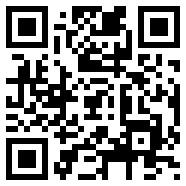 What earlier generations considered science fiction is reality today. The proliferation of mobile devices is changing our lives individually and collectively. Think about the last time you gathered with other people for an event of some kind. Were people texting? Did they use tablet devices? How did they interact with the speaker or presenter?
What earlier generations considered science fiction is reality today. The proliferation of mobile devices is changing our lives individually and collectively. Think about the last time you gathered with other people for an event of some kind. Were people texting? Did they use tablet devices? How did they interact with the speaker or presenter?
Mobile technology has the ability to engage participants in ways we never dreamed possible.
Here’s how it can work today. I have chosen a church service for illustration, but it works for any educational situation, meeting, seminar or similar gathering.
The church office prepares the service on the office computer and produces a PDF which includes everything the worshipper needs, including Scripture lessons, music for the hymns and church announcements. On Saturday morning, members of the congregation receive the PDF link by email and download it to their mobile device or tablet to bring with them to church the following day. When they arrive Sunday, flat screen monitors feature announcements and, for members who didn’t download the service bulletin PDF, they can scan a QR Code which takes them to the download site.
Before the service begins, people in the pews are asked to use their location software to let their followers know where they are and what they are doing.
Those unable to attend the service can take part online via a webcast, following along with the PDF church service bulletin they received by email or downloaded from the church website.
Although the service may be available on video projection, many worshippers use their tablets or other mobile devices to participate.
This week the usual accompaniment to hymns is not available. Via WiFi the pastor (or an assistant), triggers an MP3 recording by the church’s musicians. The player is connected to the church’s audio system.
For the sermon, worshippers click on the “Sermon Notes” link in the service PDF bulletin where they can follow a presentation (Prezi or Powerpoint) prepared by the pastor, who is preaching from his tablet device. The software allows them to highlight sections and send them via email.
During the sermon, the pastor receives questions via text mail. He can address them at the end of the sermon, or the end of the service.
Some members of the congregation have pre-authorized debit from their bank account to support the work of the church. Others will use their mobile devices to send their offering electronically during the Offertory. Once that is done, they can send a text message to the pastor should they have a prayer request.
Before leaving the service, people are encouraged to tell their online network about something they found particularly interesting or challenging. The message includes a link to the church website where a video of the pastor’s sermon is already posted.
For some, this concept is revolutionary, but it is all currently possible. And really it’s no more revolutionary than the day churches began using the new-fangled printed Bibles and hymnals!
Your current gatherings may not include large numbers of people who have the technical know-how to engage the technology, but within a generation, this could be the norm.
Are you ready or making changes to accommodate the generation for whom using technology is as natural as breathing?


2 comments
Jamee Smith
May 2, 2012 at 6:07 am (UTC -7) Link to this comment
Thanks, Ian, for this. I’ve emailed it to the Rev to share with our congregation. Exciting what’s possible these days!
Ian Adnams
May 2, 2012 at 9:16 am (UTC -7) Link to this comment
Thanks Jamee. I’d be interested to know how the discussion unfolds with the members of the congregation!